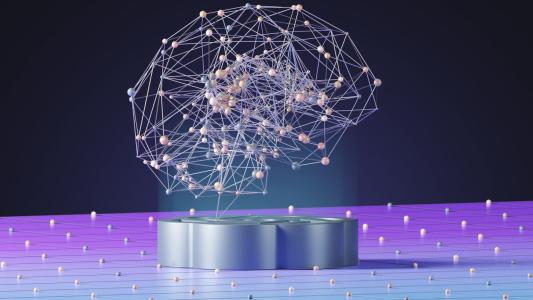More commonly known as DMT, “N,N-dimethyltryptamine” is one of the most powerful psychedelics known to humankind.
“The DMT experience is one in which people report going into a different dimension, an alternate reality that feels convincingly real, even more real than this everyday reality. One that has a spiritual significance,” Christopher Timmermann, a cognitive neuroscientist at the Centre for Psychedelic Research at Imperial College London, told Nautilus in an interview.
In this immersive and intense altered state of consciousness, users are fully awake. They will see vivid and vibrant imagery overlaid in front of their eyes, and even encounter sentient beings with whom they can have deep conversations. Unlike other psychedelics such as LSD or mushrooms, whose effects can persist for hours, a DMT trip might last only 5 to 15 minutes when the drug is inhaled or injected.
Though today DMT is commonly synthesized in the lab, and even studied as a potential treatment for depression, natural forms are found in a variety of plants, and have been taking our ancestors on mind-altering trips for thousands of years.
DMT on the brain
In a study published recently in the Proceedings of the National Academy of Sciences, Timmerman and a team of researchers described their efforts to see what this quintessentially human experience looks like in the brain as no research has revealed before. They recruited 20 healthy subjects who, on two different occasions, received either a highly potent, intravenous dose of DMT or a placebo while having their brains scanned with functional MRI and brain waves recorded through electroencephalography (EEG), the first time both technologies have been used in parallel while examining a tripping brain.
“This approach offers an important advancement because it enables the direct observation of changes in neuronal activity (EEG) in parallel with indirect changes seen through the fMRI blood oxygen level-dependent (BOLD) signal,” the researchers explained.
Timmerman and his colleagues were rewarded with some remarkable views of the DMT-altered brain. They witnessed its business-like hierarchical organization collapse, replaced with a state of global hyper-connectivity. Brain entropy, defined as “the number of neural states a given brain can access,” skyrocketed.
“The brain usually functions in this modular, organized, hierarchical way,” Timmermann explained in his Nautilus interview. “You have different networks and systems that crystallize as we grow older. What we see with DMT is that the systems that generate complex behaviors and tasks stop working in this specialized fashion. They start to work in synchrony with the rest of the brain.”
“We also see the major rhythms of the brain — that serve a largely inhibitory, constraining function — break down,” Timmerman’s co-author, Robin Carhart-Harris, a professor of neurology and psychiatry at the University of California-San Francisco, added when speaking to The Guardian.
Interestingly, some of the same patterns, though not to an identical degree, can be seen in the brains of experienced meditators as they meditate, in people with schizophrenia, and in infants, the researchers noted. This suggests that their brains may literally perceive the world differently.
Reality as a hallucination
It’s commonly said that our perception of reality is constructed by the brain. While many of us may intuitively acknowledge this as fact, it’s difficult to truly accept. According to Timmermann, DMT and psychedelics in general make the fabricated nature of reality abundantly clear to those who use them.
“They can experience how the world is a model we’re constructing in our brains. This is reality as a constrained hallucination.”
This article was reprinted with permission of Big Think, where it was originally published.





